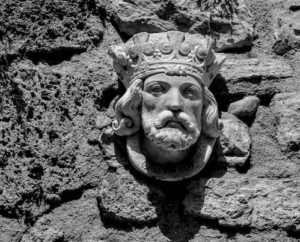Trajan’s monumental triumph
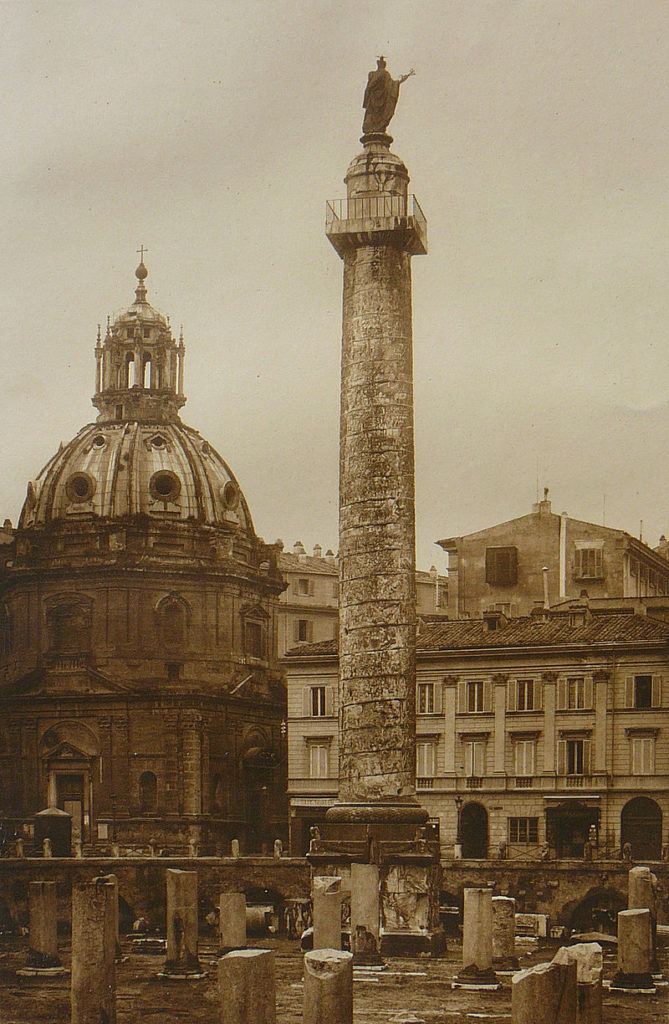
By Nemo.
As monuments go, they do not get much better than Trajan’s Column in terms of artistry, longevity and impact. Having influenced other architectural and artistic gems over the centuries, in the past 26 years it has also made a profound mark on graphic design – particularly cinema posters.
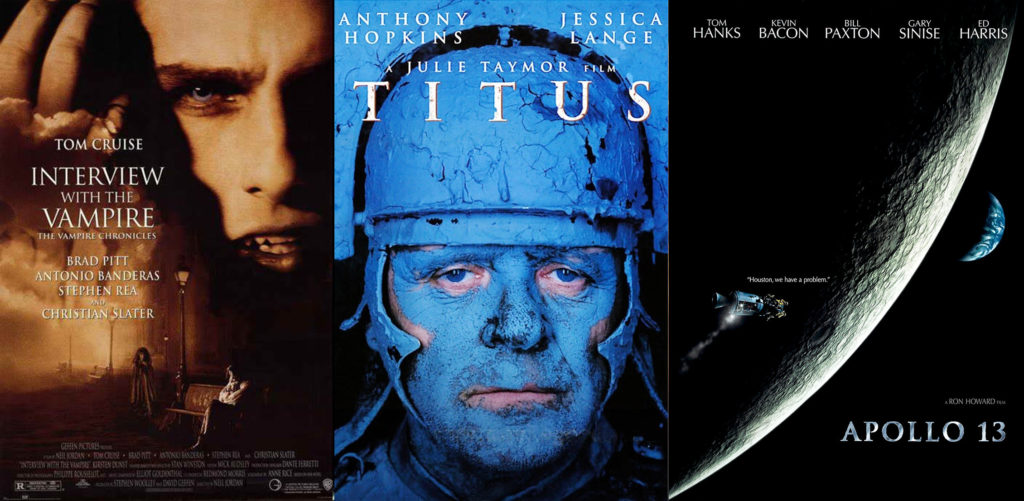
The 30-metre (35-metre, including its pedestal) triumphal column, which stands in Trajan’s Forum, near the Quirinal Hill in Rome, is believed to be the work of the architect Apollodorus of Damascus. It marked Emperor Trajan’s victory in the Dacian wars (101-102AD and 105-106AD) and was erected in 113AD.
As well as being an architectural marvel at the time in terms of the sheer logistics of its construction, it is famed for its spiral bas relief, which runs for 190 metres and winds around the shaft 23 times as it rises from base to summit.
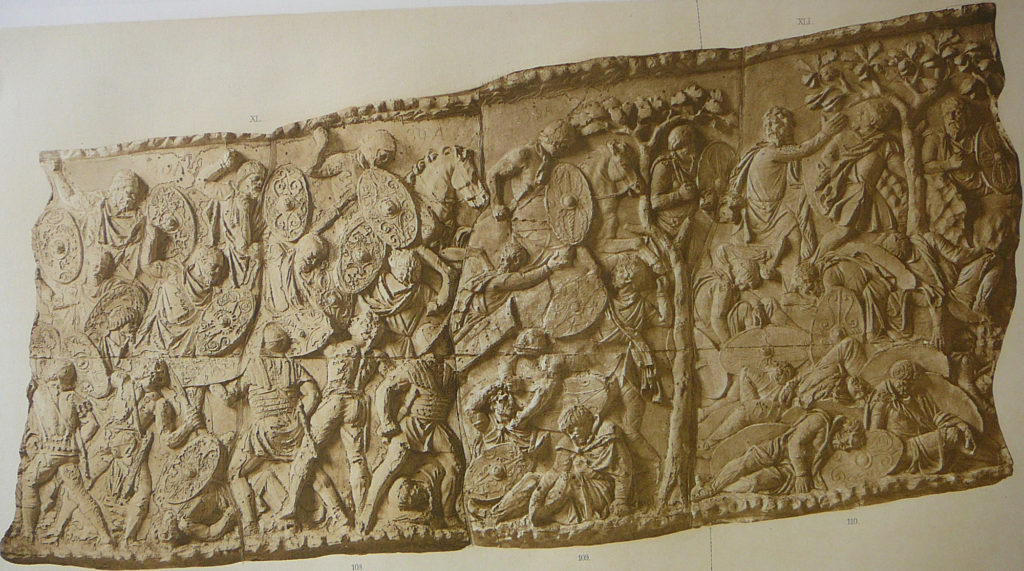
The frieze chronicles the Dacian wars and features 2,662 figures and 155 scenes, with Trajan himself appearing 58 times. The innovative design was adopted by later rulers, including Marcus Aurelius.
Sitting atop the column was a statue of Trajan, whose ashes were buried in the base of the structure. It is thought the column also represented the Roman tradition of deifying emperors – his earthly remains stay in the soil of the civic focal point of the forum while the statue topping the column represents his ascension to the heavens, literally lifted up by the great achievements set out in the column’s frieze.
Unfortunately, the statue of Trajan vanished in the Middle Ages and in 1587 Pope Sixtus V had a bronze statue of St Peter installed.
Trajan’s Column reminds us of the importance of celebrating achievement in public art and architecture, melding the two seamlessly. Its message has lasted over the centuries and can still move and inspire a modern viewer.
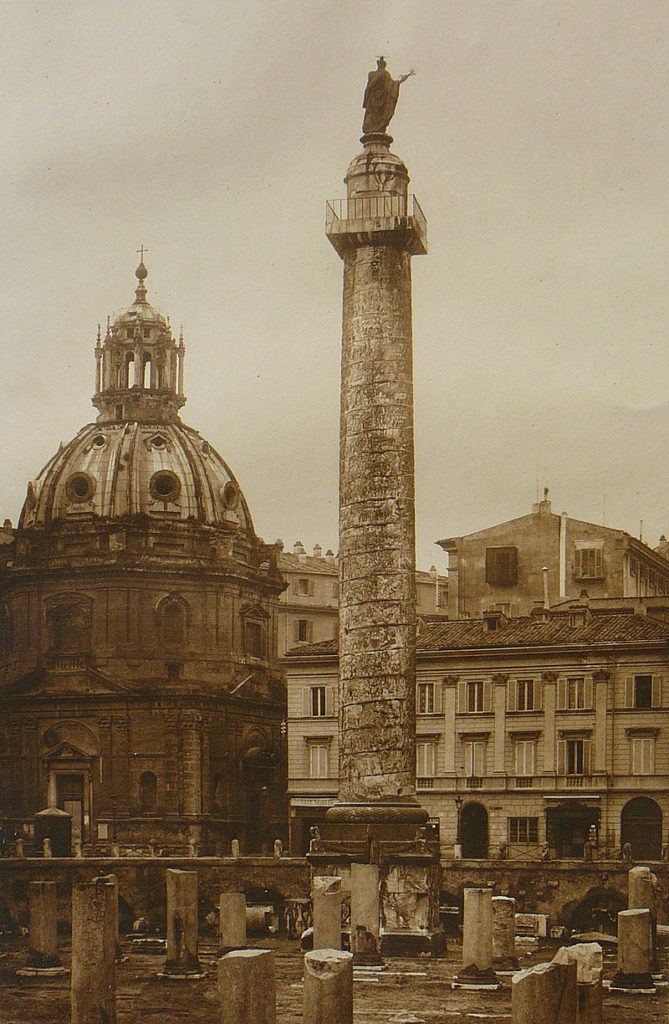
The act of celebration was important not only for the culture of the time but to remind successive generations of who their ancestors were and, therefore, who they were. Such monuments tell a people where they came from and by what labours their forebears created their legacy, making clear the standards their descendants will have to live up to if they are to prove worthy of it.
Anyone aware of Europe’s debt to Roman civilisation should still feel awe and pride when they look at the column now. How many modernist and postmodernist monuments move a viewer in such a way?
And it should be noted that the influence of Trajan’s Column even extends to the creation of a typeface that has now become ubiquitous in Western popular culture.
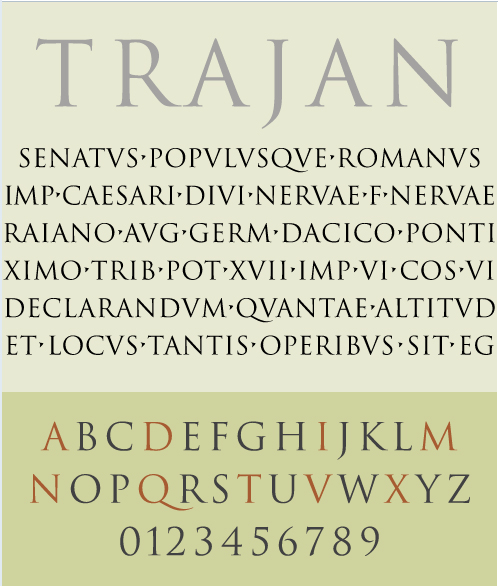
Trajan was designed in 1989 by Carol Twombly and is a very faithful facsimile of the Roman square capitals used on the column. The qualities and ideals built into the column are, in a sense, encoded in the DNA of this typeface, which has proved to resonate powerfully with contemporary viewers.
Trajan swiftly became the letterform of choice for any designer wishing to convey a sense of the epic, the majestic or the timeless.
How many modernist artefacts will enjoy such a profound and varied cultural reach 2,000 years from now?










